|
|
Post by rone on Nov 20, 2016 20:27:51 GMT 12
Peter, thank you for the pictures of the Bunker and the CAC. I served my engineering apprenticeship at the CAC, as did my father and uncle before me prewar. The machine gunfire you refer to was the army proof officers firing on the range up in the trees to the right of the original factory. Many of the trees were still there when I worked there. The white roof building at middle bottom is/was the new factory built early in the war. Two stand alone ammunition factories were also built in Hamilton, one since given to the Maoris, the other factory was demolished recently when Dey St became a part of the bypass. At the entrance to all three factories there was a sentry box situated. Nobody was able to enter or leave without a pass.
Do you know if the bunker is still operational at all?. I think I read sometime back that when the ARA stopped using it was going to be dismantled, maybe wrong though.
|
|
|
|
Post by rone on Nov 20, 2016 20:38:22 GMT 12
With reference to the US Camp at Waikaraka Park, I have memories of going into the camp at the end of the war when the troops were returning from the islands. All their gear, tents etc. were in large piles and burnt. A few locals were given camp beds and blankets and us young ones were given tins of their K rations, to get the candy that was inside.
|
|
|
|
Post by kevsmith on Nov 20, 2016 22:38:33 GMT 12
Thanks for the Maungakiekie Camp and 39th General pictures. I had never know about the Maungakiekie Camp even though we roamed the area thoroughly from about 1949 onwards.
Google Earth still shows where the camp was located.
Regards.
|
|
|
|
Post by pjw4118 on Nov 21, 2016 8:26:36 GMT 12
Rone , the bunker is used for storage now , but was active up until maybe ten years ago for Civil defence. Looking at the mass of concrete it would be a big job to demolish , but maybe make a good high rise foundation , as its in the Grammar zone its probably worth a few $M.
|
|
|
|
Post by emron on Nov 24, 2016 19:52:27 GMT 12
I've enlarged the image of the Radio Station and see the array of aerials but i'm still puzzled about the location. I searched for more detail and other photos without much success. I found mention of the combined headquarters at Mt Albert and that there were as many as 16 buildings on the site. I've pored over other aerial photos of the area and can't match. There were other navy radio stations across town, a receiving station near the Purewa cemetery and a transmitter station in Cornwall Park/ One Tree Hill. Maybe this is really a photo of one of these instead. Peter can you post the image of the Purewa Station too. This might help to solve the mystery. Also if others have more info or memories from those days please help.
|
|
|
|
Post by pjw4118 on Nov 28, 2016 18:45:59 GMT 12
Ron, Here is Purewa and Bastion Pt Radio 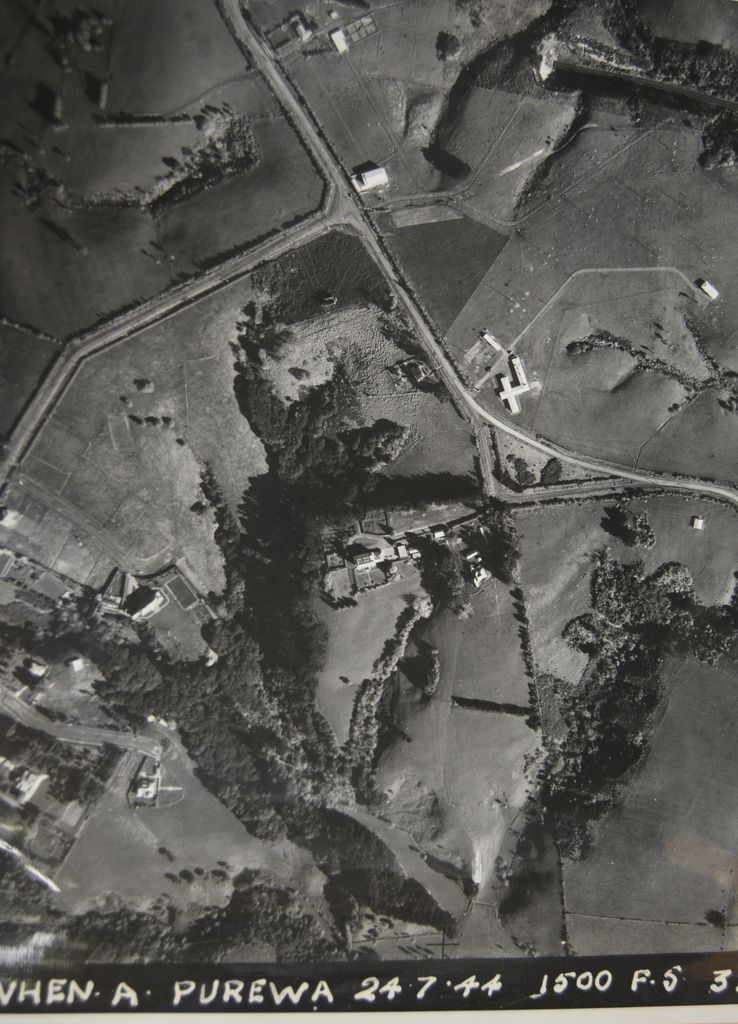 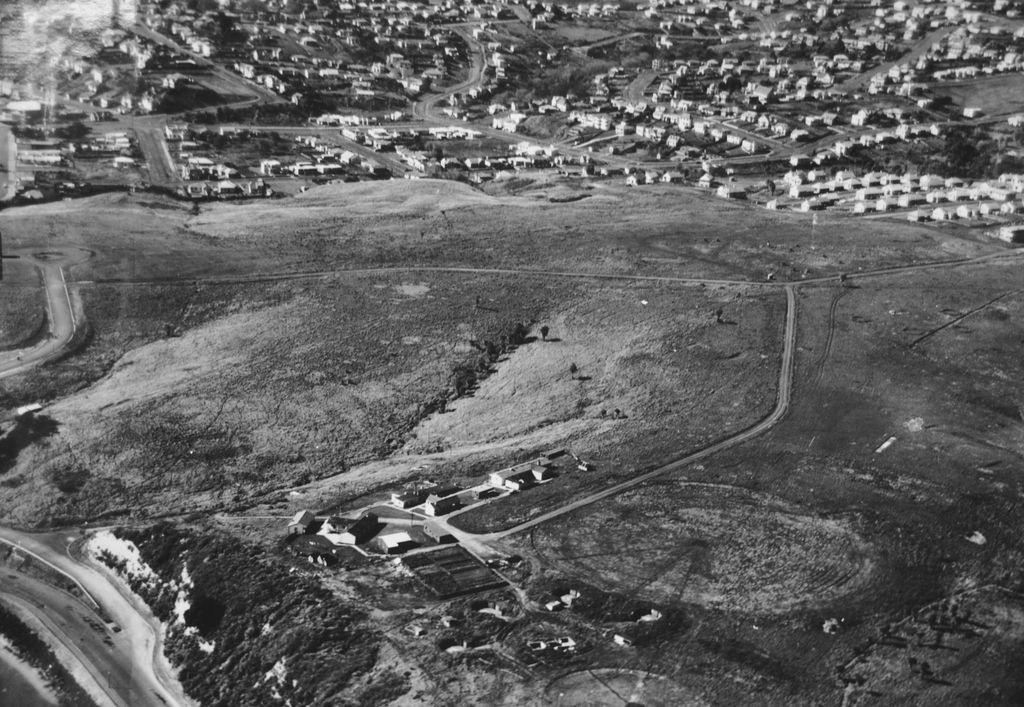 he Plus a few others that may be of interest  Rooseville Pukeko  Karaka North 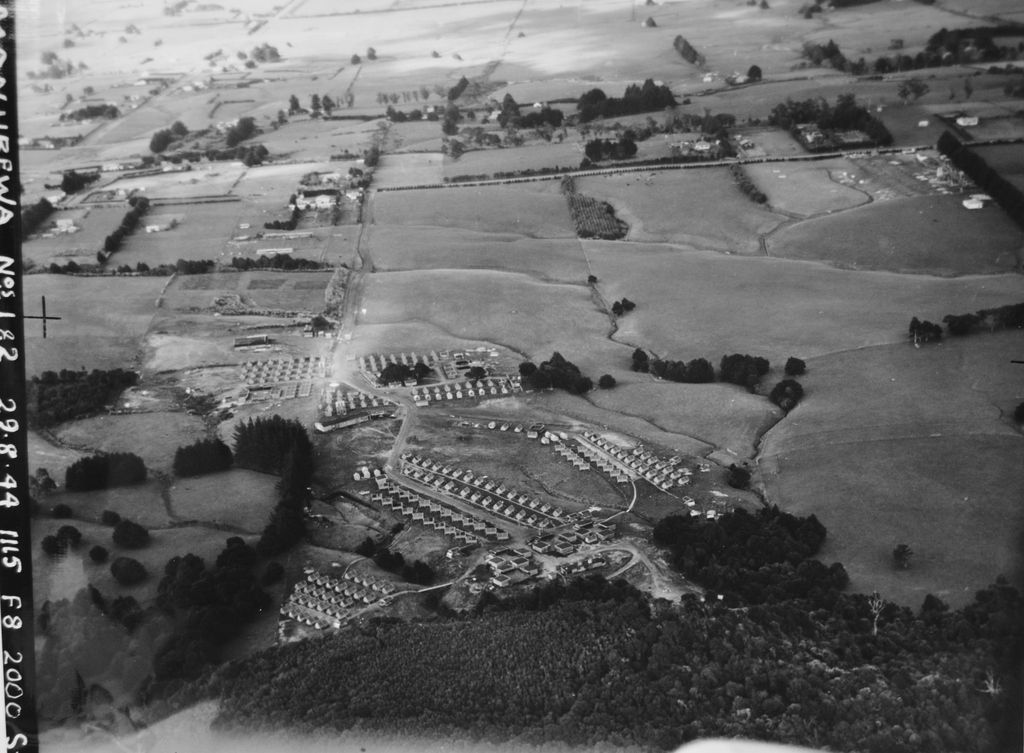 Manurewa 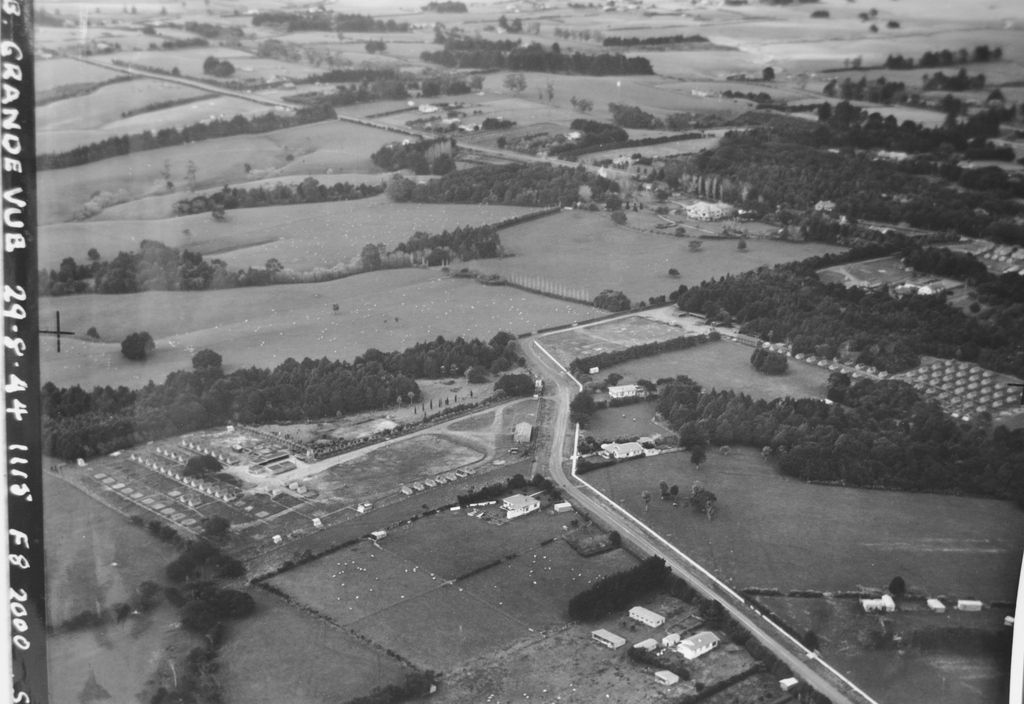 Grande Vue 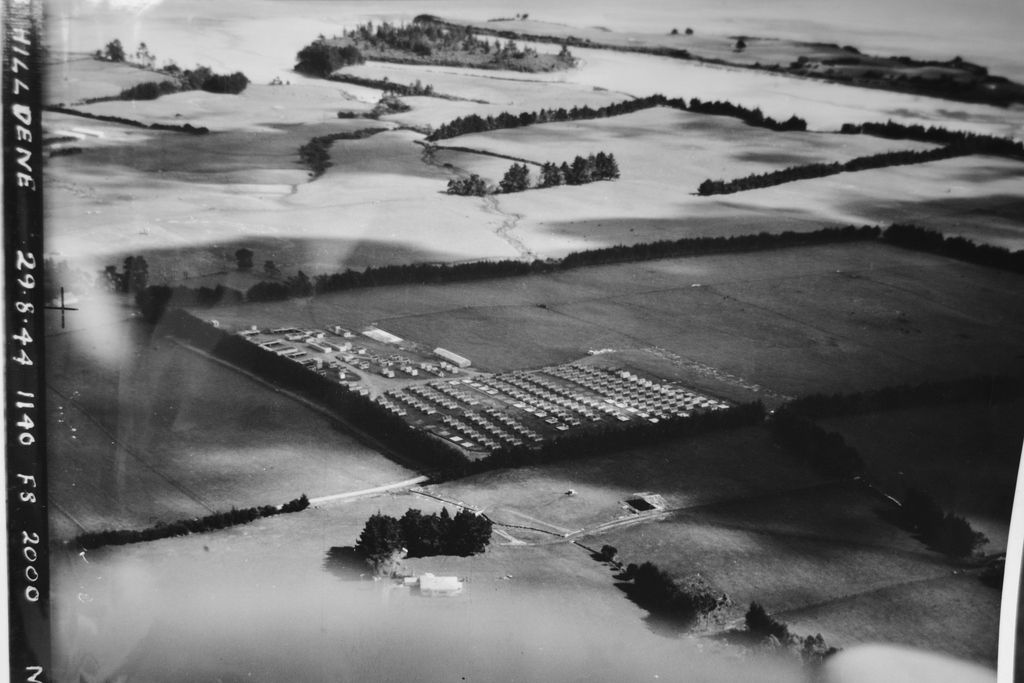 Hilldene 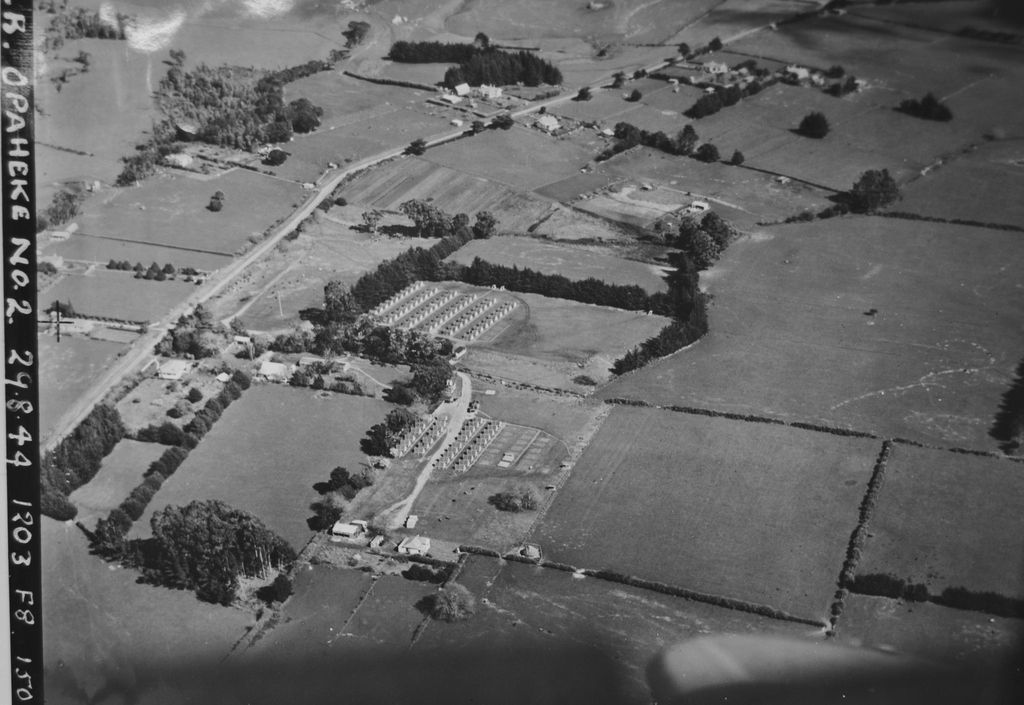 Opaheke  Pukekohe Racecourse |
|
|
|
Post by Dave Homewood on Nov 28, 2016 19:51:04 GMT 12
Wow, are these all US camps? or are some of them NZ Army?
|
|
|
|
Post by emron on Nov 28, 2016 22:04:20 GMT 12
The photo of the Purewa Radio Station is a little confusing at first because it's oriented with North at the bottom. Once rotated the location becomes clear as the intersection of St Johns Rd and St Heliers Bay Rd. The Radio Station runs across the paddock from the roadside to the railway cutting. I see at least 12 aerial masts in the layout. That was set up by the US Navy in anticipation of Auckland becoming the base for South Pacific Fleet operations. When this failed to eventuate the facilities were handed over to our Navy to operate for the remainder of the war.
The Bastion Point photo is intriguing as well. That's the AA gun battery and barracks. I think the gun emplacements were already abandoned by 1944 so the other buildings probably served another purpose by then. I can't make out much detail of those crop circles but maybe that's where the radar antennas for the gun direction were located.
|
|
|
|
Post by pjw4118 on Nov 29, 2016 14:26:13 GMT 12
Dave , most were but then taken over by the NZ Army once the war moved north. Its a little like the airfield building rush that slowed down or was abandoned in 1944 . Haast is maybe an example of a planned last retreat as it was built on a large scale , far bigger than needed an emergency strip and rarely used.
Ron I have looked again and the only layout likely seems to be looking along what became Owairaka Ave and its junction with Richardson Rd . Postwar most of the southern part of the cone was removed by the railways and for the NW motorway and State housing covered the area from 1950 , or there abouts.It certainly looks volcanic country , so maybe it is the lower slopes of One tree Hill , but why the label ?
|
|
|
|
Post by Dave Homewood on Nov 29, 2016 15:28:39 GMT 12
Pukekohe Racecourse was used by the New Zealand Army before the USA even entered the war, so I wonder if many of the other places were originally established by or for the NZ Army and taken over by the US.
|
|
|
|
Post by emron on Nov 29, 2016 21:37:43 GMT 12
Dave, I think most of the camps in South Auckland were custom built for the US Army but adjacent to established bases such as Papakura and Pukekohe. Several of them were on farms with their homestead taken over for admin. For most of the inner city camps they just expanded on existing Kiwi facilities.
Peter, I've finally found the matching location for the Mt Albert Radio Station. The view is looking west along Stoddard Rd with Richardson Rd to the left. This whole area south of Mt Albert Rd was still open farmland in those days. The station is in the right foreground and roughly where Sandringham Rd extension is today. Would it be better described now as the Mt Roskill Radio Station ?
|
|
|
|
Post by pjw4118 on Nov 30, 2016 7:51:13 GMT 12
Good spotting. Yes that area was covered in houses from 1950 odd , almost solid rock and the place where my father practiced home guard duties. The other was in the then barren area where St Lukes Centre now is across to the Grammar school grounds. The advantage here was is was just over our back fence and a handy spot to stop for a tea break. My mother regularly thought they were Japs and panicked . I must look for some Home Guard photos.
|
|
|
|
Post by emron on Dec 4, 2016 19:00:36 GMT 12
Peter, I've revisited the photo of the Maungakiekie Camp and realise that's the elusive Cornwall Park Radio Station. You can see the five 70ft masts with guy wires in the paddock at the far left of the image. This was the US Navy operated transmitter station for W/T traffic to ships and other bases all around the Pacific. By late 1944 US forces were withdrawing from NZ and this facility was turned over to the RNZN. The location is just further west around the Park from the hospital complex. About this time Naval Communications had new headquarters at Mechanics Bay and perhaps one of the images listed in your first index could show this.
Most of this detail I've recently found in an account of wartime radio history courtesy of the RNZN Communicator's Assn.
On a related topic did you know that during 1944 the local branch of the US Forces Radio broadcast to the troops from station 1ZM based in the 1YA studios in the city. Apparently equally popular with the locals.
|
|
|
|
Post by pjw4118 on Dec 6, 2016 13:47:04 GMT 12
Auckland must have been a busy place in those times. I hope to get back to the AWMM to look at the Northland files . There may be a few suprises hopefully.
|
|
|
|
Post by emron on Dec 11, 2016 18:00:49 GMT 12
I've found out more about the Mechanics Bay camp. Four barrack blocks and support facilities were built during late 1942 for the US Navy to house 500 men. They occupied vacant Harbour Board land on the reclamation between the airline terminals and Tamaki Drive. It was immediately used as a receiving camp for Marines in transit from the port and before catching trains to their Wellington training bases. It was quite a strategic location being in walking distance from the Port and Railway Station and also only a short ferry ride across the harbour from Devonport. Once the US troops departed off to battle the camp was put to various other uses later in the war. Both the RNZAF and RNZN based services there. The 1950 aerial photo over on the "Mechanics Bay Terminal Building" thread shows most of the complex still remaining behind the TEAL base. I don't know who occupied the buildings postwar but I guess the airline engineering dept would have taken over some of the space.
Looking at that 1950 photo again I noticed the bulk storage tank farm on the city end of the site. Was this a wartime addition and/or speciaaly made for fuelling the flying boat fleet ? That AWMM 1944 archive photo would give a clue.
|
|
|
|
Post by pjw4118 on Dec 15, 2016 15:53:52 GMT 12
Ron, Here's a picture of the Mechanics Bay Camp 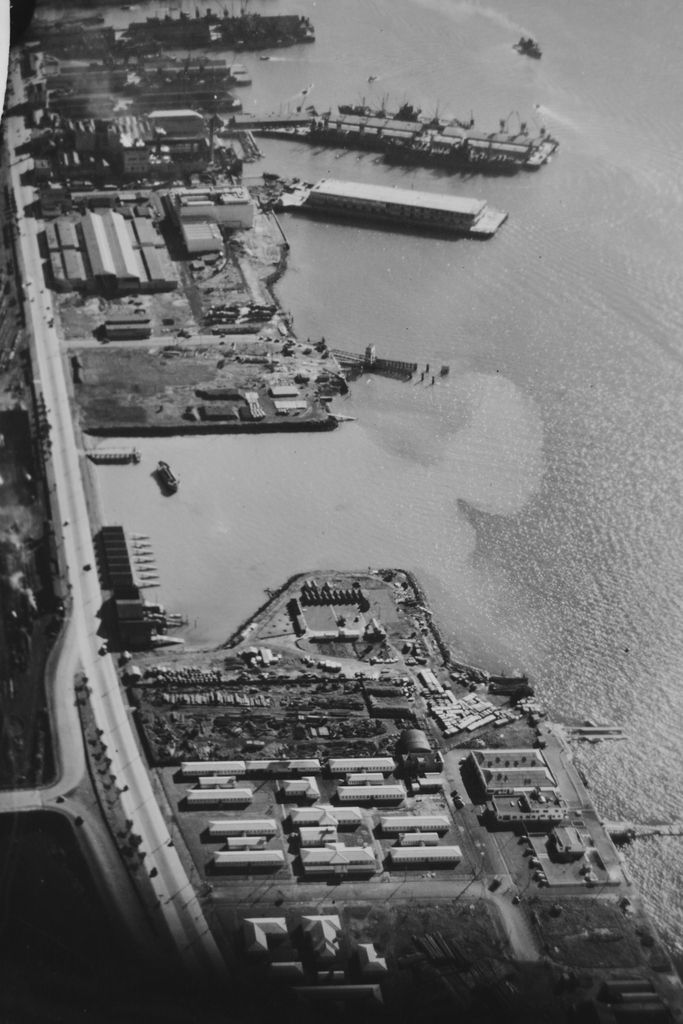 |
|
|
|
Post by Dave Homewood on Dec 15, 2016 17:22:25 GMT 12
Some of those Mechanics Bay buildings ended up shifting to MOTAT when the museum was first established and Mechanics Bay was being downsized.
|
|
|
|
Post by emron on Dec 15, 2016 22:38:56 GMT 12
Another treasure from the archive. In 1944 the hangar, ramp and tank farm are still to be built. This area was known as the Eastern Reclamation. In the near background is the vehicular ferry wharf with a queue of cars waiting at the ramp for the next vessel. This was shortly to be developed as Jellicoe Wharf. Behind that is recently built Bledisloe Wharf where frozen meat was exported from the adjacent AFFCo cold store. Next is Kings Wharf with smoke cloud from the Power Station and all the way down to Queens Wharf and Ferry Terminal at the back. Being within walking distance of Queen St and with the Railway Station just across Tamaki Drive the camp was a central location and at the end of the war served as city headquarters for all services. By then there was already pressure to vacate and remove all of the camps set up in parks and racecourses around the region and quickly return them to public access. Being on Harbour Board land Mechanics Bay remained unaffected by this and staff were relocated there from other camps as they closed.
|
|
|
|
Post by pjw4118 on Dec 16, 2016 9:04:31 GMT 12
Fascinating info Dave and Ron . Hopefully theres more still to be found in the AWMM archives. As a side result from looking for US camps I came across some details on the camps built for conscientious objectors here in NZ. I will put that up on the NZ Army boards as I think they were run by the Army but under war regulations .
|
|
|
|
Post by Dave Homewood on Dec 16, 2016 9:10:48 GMT 12
Interestingly a lot of those who objected were able to remain free from prison. Those who were of certain religions, etc. More often than not they were directed by the Senior Magistrates who held the Appeal court hearing to work in an essential industry, AND join the Home Guard, so they actually did end up serving in the military (the Home Guard was part of the Army by then). I guess it was the militant political objectors and those who refused Home Guard and war work service who were then jailed. And bloody good job locking up people with such views when their country was in serious danger of invasion.
|
|

